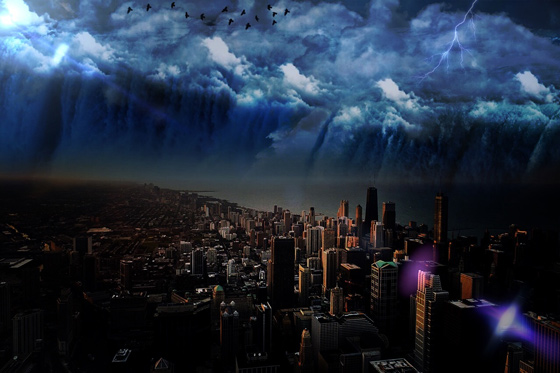The Silent Threat Hiding in 39 U.S. States. Are You Living on a Ticking Time Bomb?
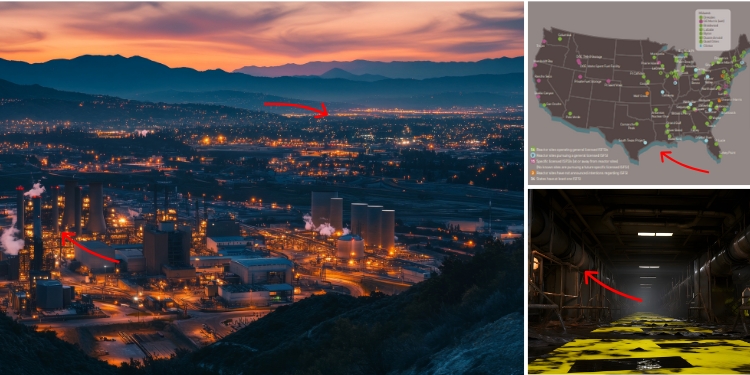
Right now, around 90,000 metric tons of highly radioactive nuclear waste are quietly sitting across 39 U.S. states. In many cases, just miles from where families live, work, and raise their children. This waste, known as Spent Nuclear Fuel (SNF), is a byproduct of decades of nuclear power generation. It’s invisible, rarely mentioned, and dangerously misunderstood.
Now, this isn’t something that’s about to blow tomorrow. But when something does go wrong, the consequences can be just devastating. We’re talking radiation, contamination, and long-term unlivable zones—not for days or months, but for generations.
Make no mistake: this threat is real, and it’s growing. If you think you’re safe just because you don’t live near a nuclear power plant, trust me… You better think again. Let’s see why.
What Is Spent Nuclear Fuel?
Spent Nuclear Fuel (SNF) is the radioactive waste left behind after uranium or plutonium has been used inside a reactor to generate electricity.
The word “spent” is misleading. Because while the fuel can no longer power a reactor, it is far from safe. In fact, once removed, it becomes even more unstable. And deadly.
Immediately after removal, SNF is stored in cooling pools: deep, water-filled basins designed to absorb radiation and prevent the rods from overheating. These pools must have continuous power to keep the water circulating.
After several years, the SNF may be transferred to “dry casks”: massive steel-and-concrete containers meant to seal in the radiation. But the fact of the matter is that these containers were only engineered to last a few decades. The radioactive material inside? It remains dangerous for thousands (or even millions) of years.
Why Spent Nuclear Fuel Is So Dangerous
SNF emits extremely high levels of radiation. Just being near a single unshielded fuel rod can deliver a lethal dose in seconds.
That’s why it must be stored under strict, heavily regulated conditions. But regulations are only as good as the infrastructure—and the truth is, much of it is aging fast.
What makes SNF particularly dangerous are the long-lived radioactive isotopes it contains:
- Cesium-137: Highly soluble. Contaminates land and water for centuries.
- Strontium-90: Mimics calcium. Builds up in bones, causing cancer.
- Plutonium-239: One of the most toxic substances known. Half-life: 24,100 years. A single microgram can be fatal if inhaled.
- Technetium-99: Half-life over 200,000 years. Highly mobile in groundwater.
- Iodine-129: Half-life of 15.7 million years.
Now here’s the real nightmare: the waste stays toxic for thousands of years. But the systems built to contain it were never designed to last even one lifetime.
Cooling pools require constant power to keep the water circulating. Dry casks are better, but still vulnerable to corrosion, earthquakes, floods, sabotage, or simple neglect.
A major disruption, whether it’s a cyberattack, hurricane, or prolonged blackout, could lead to a catastrophic radiation leak.
To be clear: this isn’t an imminent threat. But make no mistake! When something goes wrong with SNF, the consequences are on the same level as a nuclear attack.
It doesn’t explode, but it poisons. It doesn’t flatten buildings, but it renders land unlivable for generations. When it happens, it won’t leave time for second chances.
Where Is Spent Fuel Stored in the U.S.?
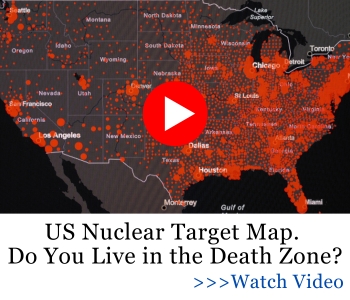 As of 2025, over 100 facilities in 39 states are storing SNF. Some are near dense population centers, rivers, and coastlines. Not hidden away in remote bunkers like you may assume.
As of 2025, over 100 facilities in 39 states are storing SNF. Some are near dense population centers, rivers, and coastlines. Not hidden away in remote bunkers like you may assume.
According to the U.S. Nuclear Regulatory Commission (NRC), 34 states currently have at least one Independent Spent Fuel Storage Installation (ISFSI). These are standalone facilities specifically designed to store spent nuclear fuel.
However, the total number of states storing spent nuclear fuel is actually 39. That’s because not all SNF is stored in ISFSIs. Many older or decommissioned nuclear plants still keep their spent fuel on-site, often in cooling pools or in dry storage units that aren’t classified as separate ISFSIs.
In short: ISFSIs are only part of the picture. When you include all forms of SNF storage – both dry and wet, both onsite and offsite – the footprint extends across 39 U.S. states.
Here are some examples of high-risk areas:
- California: San Onofre (decommissioned) and Diablo Canyon
- Florida: Turkey Point (coastal, hurricane-prone)
- New York: Indian Point (shutdown, but still storing SNF near the Hudson River)
- New Jersey: Oyster Creek and Salem
- Connecticut: Millstone Power Station
- South Carolina: Brunswick Nuclear Plant
The Full List of States Storing SNF
Here is the full list of states storing SNF: Alabama, Arizona, Arkansas, California, Colorado, Connecticut, Florida, Georgia, Idaho, Illinois, Iowa, Kansas, Louisiana, Maine, Maryland, Massachusetts, Michigan, Minnesota, Mississippi, Missouri, Nebraska, Nevada, New Hampshire, New Jersey, New York, North Carolina, North Dakota, Ohio, Oregon, Pennsylvania, South Carolina, Tennessee, Texas, Vermont, Virginia, Washington, Wisconsin, Wyoming.
I’ll leave you a map too:
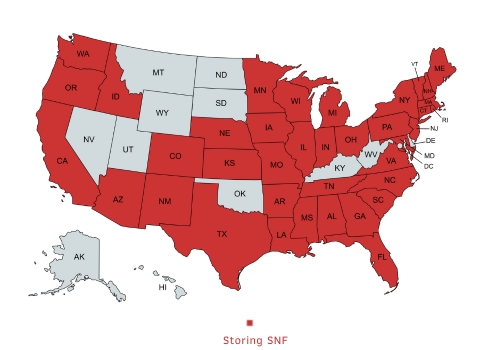
Many of these areas are prone to flooding, hurricanes, earthquakes, or sea-level rise. Here’s a number that should concern you: around 73% of all SNF is still stored in cooling pools, completely reliant on a stable power grid.
The other 27% is in so-called dry casks, originally meant as a temporary fix.
But the United States has no permanent storage site for high-level radioactive waste.
Plans like Yucca Mountain were shelved due to political infighting. And the waste? It just keeps piling up.
Can Spent Fuel Be Recycled?
Technically, yes. Other countries do it. France and Russia reprocess spent fuel to recover usable plutonium and uranium. These recovered materials can be reused in special reactors. Reprocessing also reduces the volume of high-level waste.
It’s also worth mentioning that Finland is building the world’s first deep geological repository at Onkalo. SNF will be buried 1,400 feet underground, in stable bedrock, sealed for 100,000 years.
So why doesn’t the U.S. do this? Because in the 1970s, America abandoned reprocessing for several reasons: high costs, nuclear weapons proliferation risks, and the creation of additional waste streams.
While some advanced fast breeder reactors could one day solve part of the problem, they remain largely experimental in the U.S.
Reprocessing doesn’t solve the problem. It only delays it. Even the most advanced nations still have to bury part of their waste for millennia.
Meanwhile, in the U.S., we’re not even doing that. The waste just sits in temporary storage, exposed to time, corrosion, and chance. Sooner or later, something gives.

What Happens If Things Go Wrong?
Let’s get real, folks. It’s one thing to know SNF is dangerous. It’s another to imagine the disaster when things fall apart. Here’s one possible scenario:
A major earthquake strikes the West Coast. At a decommissioned plant near the ocean, a dry cask cracks open. No alarms go off. Radiation begins leaking silently. Within 24 hours:
- Prevailing winds push radioactive dust inland.
- Locals start feeling nausea, vomiting, and burns.
- Potassium iodide sells out in hours.
- Hospitals are packed.
- Roads are jammed with desperate families trying to flee.
- Evacuation zones expand rapidly.
- Authorities struggle to contain panic.
And the worst part? Unlike a wildfire or a flood, there is no “after.” The land could be uninhabitable for generations. This isn’t a doomsday fantasy. In 2011, Japan’s Fukushima disaster nearly triggered a catastrophic SNF fire.
And that was in one of the most technologically advanced countries on Earth. So ask yourself: if that happened here, with our aging grid and polarized politics… Would your town survive? Would YOU survive?
What You Can Do If You Live Near Stored Nuclear Fuel
If you’re within 50 to 100 miles of a nuclear storage site, you need to take this seriously. Awareness is the first step. Use the U.S. Department of Energy’s map to see if you live near a storage site.
But awareness isn’t enough. In the event of a radiation emergency, your survival depends on having the right resources in place—and the plan to use them without hesitation. Here’s what matters most:
Shelter: Radiation protection starts with distance and shielding. A remote, underground location is ideal. I recommend you consider something like The Easy Cellar. This discreet, smart structure can protect you from fallout, gamma rays, and desperate looters after an SNF release. If evacuation is impossible, a fortified shelter is your only defense.
Water: Radiation contaminates water fast. Tap water, wells, and even rain can become toxic. A portable solution like this backpack-sized water generator can pull clean, drinkable moisture from thin air. Many of those who tried it like to call it now “the infinite clean water bottle”. This is crucial when the grid fails or supplies run dry.
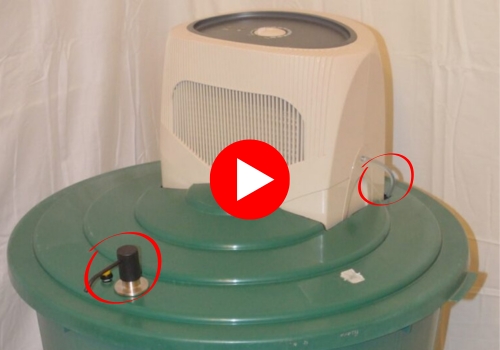
There’s an important alternative for anyone serious about long-term water security: The Water Freedom System. This innovative solution has been adopted by military forces in countries like the U.S., UK, Israel, and India. It could make a real difference in your preparedness plans. Take a closer look here.
Food: Supply chains will break down. Stores will empty. If you have to go and there’s no strong remote location that you can count on, surviving in the wild will be your only option. In this case, foraging becomes a survival skill, and you should learn and practice its principles.. Here are two great resources:
These fantastic guides writen by Dr. Nicole Apelian teach you how to identify and prepare safe, nutritious wild foods when nothing else is available.
Medicine: In the event of a nuclear disaster, you most certainly won’t be able to reach a hospital. So you’ll need to treat radiation burns, fevers, infections, and trauma on your own. The Home Doctor offers practical, off-grid medical knowledge you can actually use when every second counts.
There’s no room for wishful thinking. A cracked dry cask or failed cooling pool won’t give you time to “figure things out.” Build your retreat plan now. Stock your gear. Practice your exit strategy. Because when SNF fails, the only thing between you and disaster is what you’ve already prepared.
Final Thoughts
Mankind has created few substances more dangerous than Spent Nuclear Fuel. And yet, in the United States, it’s sitting in plain sight, in outdated containers, next to homes, rivers, schools, and coastlines.
What makes this threat so terrifying is its silence. No sirens, smoke, or noise. Just decades-old infrastructure, quietly decaying while politicians kick the can down the road. But you don’t have to wait around. You have a choice: Awareness over ignorance. Action over trust. Survival over surprise. This threat is manageable, if you’re serious about it.
Looking for a bugout spot away from nuclear danger? Amish communities can be a smart indicator. They thrive off-grid, often far from SNF zones. Kentucky, for example – home to many Amish communities – has no SNF sites. I learned that from The Amish Ways Book, which also reveals many other secrets that have helped this community live off the grid for over 200 years. Click here to get one of the last copies available!
You may also like:
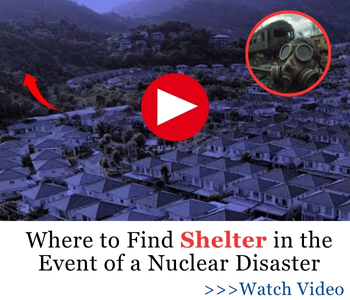
Actions To Take Immediately After A Nuclear Blast
The “Doomsday Ration” That Can Keep an Adult Well Fed For Just $0.37/day (Video)
Nuclear Protection Supplies You Need To Have Ready
10 Nuclear War Movies You Should Watch Before It’s Too Late
Read the full article here





